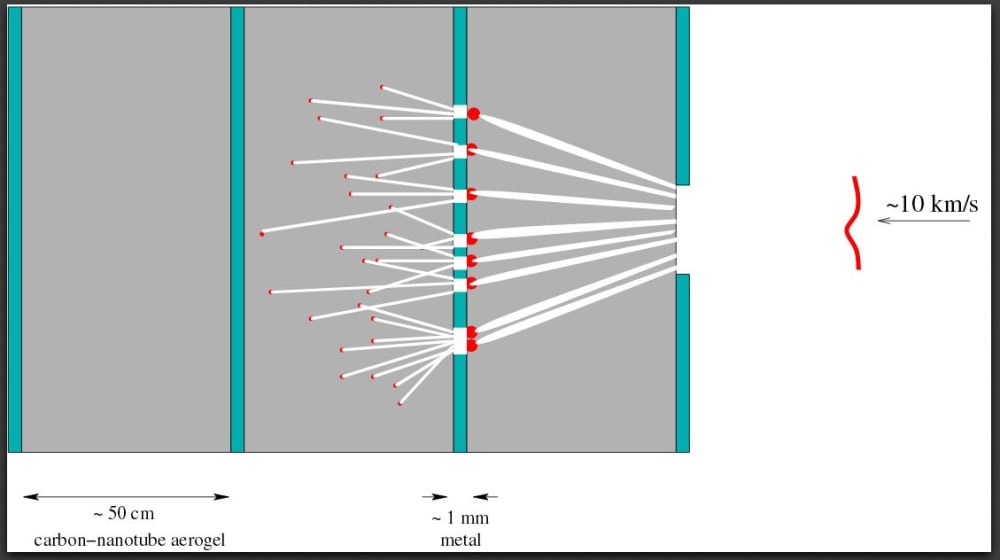The problem:
Satellites in Earth orbit are increasingly in danger of being damaged and disabled by collisions with orbiting pieces of debris that are generated by explosions of fuel tanks or other mishaps, etc. These collisions generate more debris, which will eventually - over thousands of years - burn up in the atmosphere. In the meantime, a runaway cascade of debris generation can occur, as predicted by Kessler in 1991 [1] ("the Kessler syndrome"). There is widespread agreement that at orbital heights near 1000 km and 1500 km altitude the critical density for such a runaway process has already been reached. This process will eventually seriously limit mankind's access to space.
Proposed solution:
Here, a type of shield is proposed that can protect satellites against orbiting objects up to about 100 g in mass [3]. If deployed in larger quantities, such shields can also be used to clear orbits of debris. The shield consists of a layered structure of thin metal sheets and
carbon-nanotube aerogel, as shown in Fig. 1. The idea is similar to the layered type of armor used to protect tanks against shaped-charge ammunition. The metal sheets take up momentum from an impacting piece of debris, and the energy of the resulting spray of metal particles is dissipated in the aerogel without the release of secondary particles. Thus, debris is captured without producing more of it.
Aerogels are very strong, and very low-density materials that can absorb a large amount of kinetic energy without breaking up. Recently [2], it has been demonstrated that extremely stiff aerogels can be made from a solution of carbon nanotubes by freeze-drying it. This process lends itself to in-orbit production of large volumes of aerogel from a few liters of solution where the working fluid is recovered and recycled in the freeze-drying process.
Market opportunity:
1) Shields as described here can be used to protect satellites in orbit
2) It will soon be necessary to launch an international effort to
remove debris from orbit. Aerospace industry could offer orbiting
"factories" of aerogel material to assemble shields in-orbit, and
deploy them for gradual clearing of orbits.
[1] D.J. Kessler, Collisional cascading: The limits of population
growth in low earth orbit, Adv. Space Res. 11, 63-66 (1991)
[2] Haiyan Sun, Zhen Xu, Chao Gao, Multifuncitonal, ultra-flyweight,
synergistically assembled carbon aerogels,
Advanced Materials 25, 2554-2560 (2013)
[3] estimate based on momentum conservation with a 10-kg shield
assembly: a 100-g mass impacting at 10 km/s will change the velocity
of the shield by 100 m/s, which can be taken up by shock absorbers in a
mount to the satellite to be protected
Like this entry?
-
About the Entrant
- Name:Bernhard Adams
- Type of entry:individual
- Patent status:none

